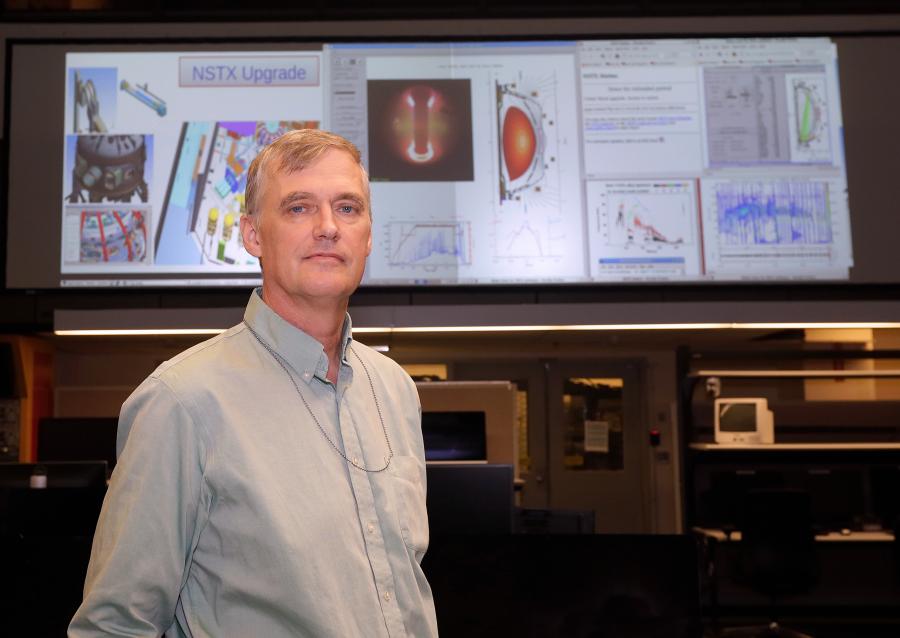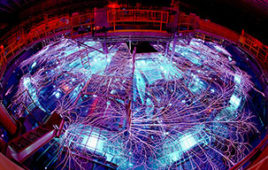
Physicist Eric Fredrickson, lead author of the paper, in the NSTX-U control room. Source: PPPL
Scientists have discovered a remarkably simple way to suppress a common instability that can halt fusion reactions and damage the walls of reactors built to create a “star in a jar.” The findings, published in June in the journal Physical Review Letters, stem from experiments performed on the National Spherical Torus Experiment-Upgrade (NSTX-U), at the Department of Energy’s Princeton Plasma Physics Laboratory (PPPL).
The suppressed instability is called a global Alfvén eigenmode (GAE) — a common wave-like disturbance that can cause fusion reactions to fizzle out. Suppression was achieved with a second neutral beam injector recently installed as part of the NSTX-U upgrade. Just a small amount of highly energetic particles from this second injector was able to shut down the GAEs.
Akin to a snake or dragon
Such instabilities are akin to a snake or dragon that swallows its own tail. Stirring up GAEs are the same neutral beam particles that heat the plasma, which are ionized into electrons and ions, or atomic nuclei, inside the gas. Once triggered by these fast ions, the GAEs can rise up and drive them out, cooling the plasma and halting fusion reactions.
Suppressing this arousal were beams from the second injector, which flow through the plasma at a higher pitch-angle, in a direction roughly parallel to the magnetic field that confines the hot gas. Physicists call such beams “outboard” to distinguish them from the “inboard” beams that the original NSTX-U injector produces, which flow through the plasma and the magnetic field in a more perpendicular fashion.
Injection of the outboard beam suppressed GAEs in milliseconds. Fast ions from the beam combined with those from the inboard beam to increase the density of the ions and alter their distribution in the plasma. The sudden alteration reduced the gradient, or slope, of the ion density, without which GAEs were unable to form and ripple through the plasma.
Good news for fusion development
These remarkable results were good news for fusion development. “Normally, when you inject energetic particles, you drive up instabilities,” said Jonathan Menard, head of research on NSTX-U. “The fact that the second neutral beam was able to turn them off by varying the fast-ion distribution with a small amount of particles provides our research with flexibility and is a welcome discovery.”
The result validated predictions of a computer code called “HYM,” developed by PPPL physicist Elena Belova, and could prove useful to ITER, the international fusion facility under construction in France to demonstrate the ability to confine a burning plasma and produce 10 times more power than it consumes.
“This research demonstrates suppression of GAEs with just a small population of energetic particles,” said physicist Eric Fredrickson, lead author of the journal article. “It gives confidence that by using this code, reasonable predictions of GAE stability can be made for ITER.”




